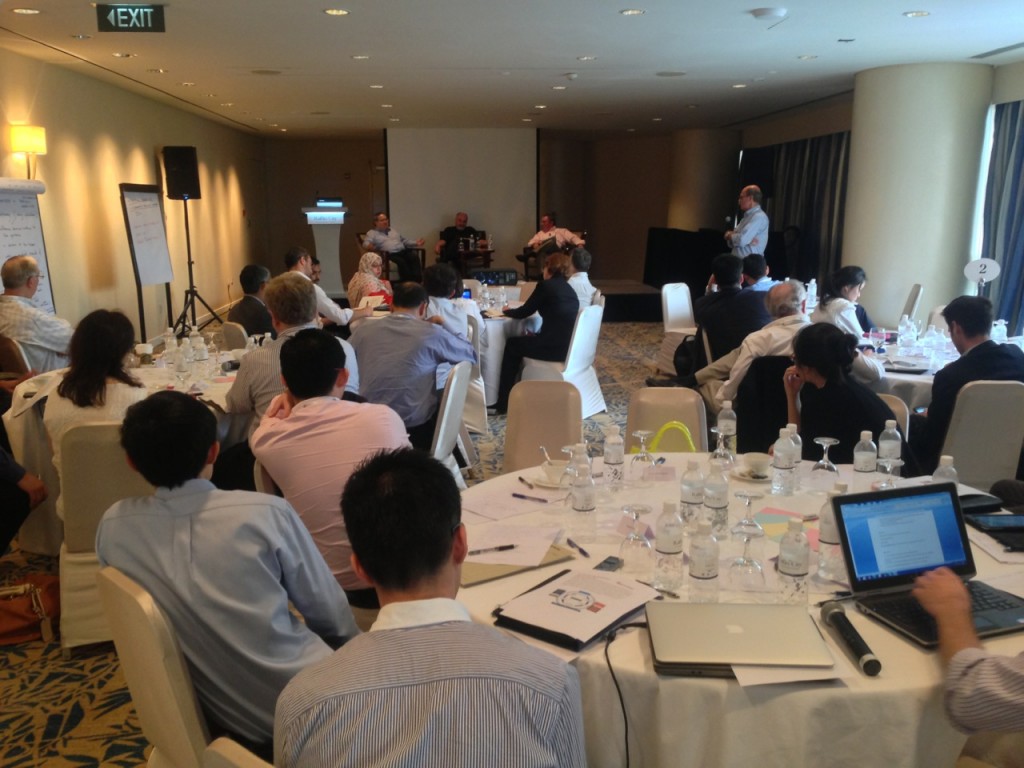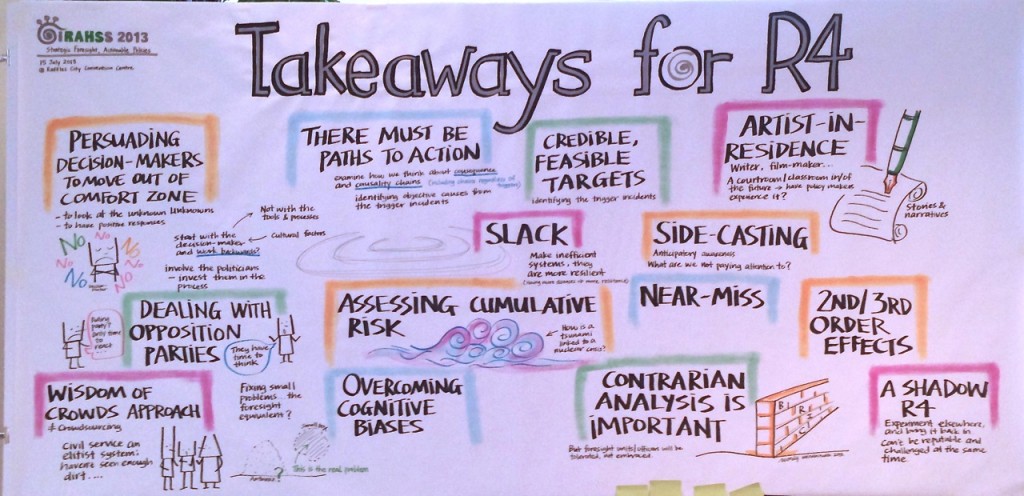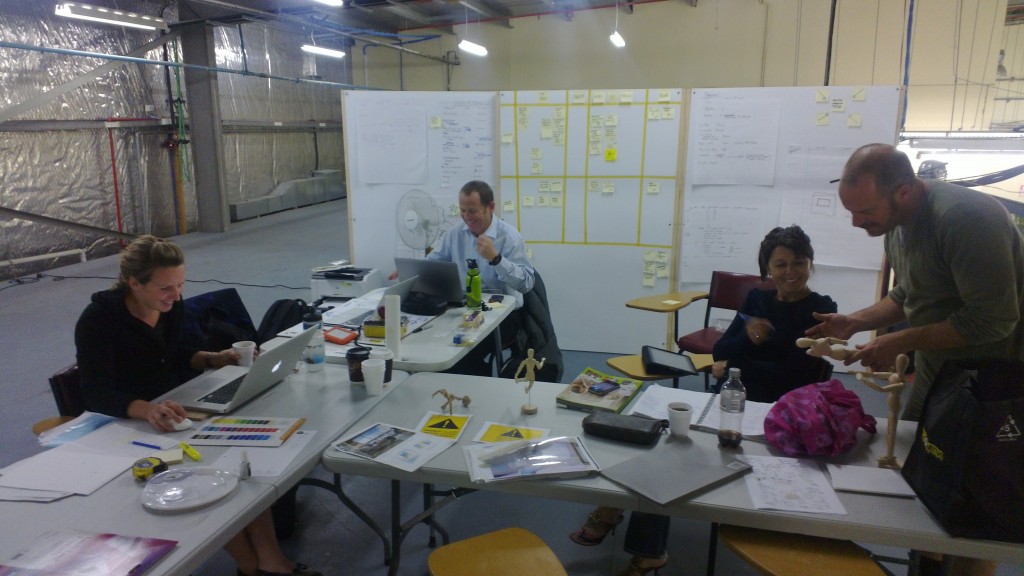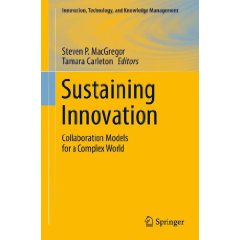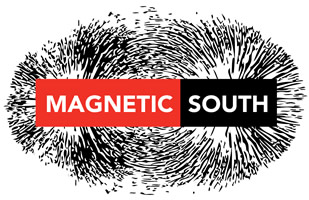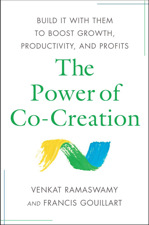This week I’m in Singapore in a series of workshops that I’ve been invited to. It’s been a fascinating first day, exploring how to evolve the next generation of horizon scanning tools. I’ll blog some of the more interesting insights over the next few days, but in the meantime here’s the workshop today and key insights.
Category / Innovation PROCESSES
Todays office
Sustaining Innovation – book on pre-release
It’s been a busy year on the publishing front. Firstly there was Really Bad Workshops (and how to avoid them) which I self published mid-year, and now there’s Sustaining Innovation.
It’s a collection of insights from various innovation initiatives around the world. I wrote a chapter on the Shell GameChanger Technology Futures programme, and co-authored it with my colleagues Tim Jones and Leo Roodart, the recently retired head of GameChanger.
It’s on pre-order here:
UPDATE: You can now read the chapter online here.
An innovation lab inside a Fortune 500 (video)
Here’s a great video about how a large corporation has created a nimble innovation lab that’s free from the shackles of bureaucracy that normally stifle innovation. The full story is here but watch the video first:
For Bright Ideas, Ask the Staff (WSJ article on crowdsourcing innovation)
Crowdsourcing innovation internally can be extremely productive for large organisations. Over the last year I’ve started to work very closely with Spigit – a US company that has the leading tool in the innovation crowdsourcing market. Late last year the Wall Street Journal had a nice summary of why organisations are buying into the idea of innovation from within:
It’s often the employees—rather than outside consultants—who know a company’s products and processes best. According to management experts, many of the most innovative companies tend to solicit ideas from staff throughout the organization, not just the executive ranks.
But it’s often hard for rank and file workers to be heard: Research has found that the average U.S. employee’s ideas, big or small, are implemented only once every six years, says Alan G. Robinson, a professor at the Isenberg School of Management at the University of Massachusetts, Amherst.
Now though, more companies are realizing the value of their workers’ input. Spurring the process are so-called innovation-management programs such as BrainBank Inc., InnoCentive Inc. and Spigit Inc., which help companies set up online idea-submissions systems in which employees can enter, comment and vote on ideas.
Spigit was also the subject of another article in Canada, which referenced an airline implementing the software. The interesting thing about this example is that it mentions the return on investment from just two ideas:
WestJet has implemented a number of employees ideas, including getting rid of ticket jackets – which saves about $700,000 a year – and making the employee standby travel line automated, rather than going through the call centre. Tilbury says that reduces costs by about $1 million a year and freed up the centre by removing about 18 per cent of its calls.
You can read more about the Wall Street article here and the full story from Canada here.
Five Discovery Skills that Distinguish Innovators — HBS Working Knowledge
The Harvard Business School Working Knowledge site has published an extract from “The Innovator’s DNA”, the latest book from Clayton M. Christensen (with Jeff Dyer and Hal Gergersen). They outline the five discovery skills that distinguish the Steve Jobses and Jeff Bezoses of the world from the run-of-the-mill corporate managers.
The key concept is that research supports the idea that innovative tendencies are not genetic. Rather, they can be developed. The authors identify five discovery skills that distinguish successful innovators: associating, questioning, observing, networking, and experimenting.
Reading the extract it felt like someone had just described my day job. Read more here : Five Discovery Skills that Distinguish Great Innovators — HBS Working Knowledge.
Innovation at scale – software platforms
In my experience there are only a handful of ways of unleash innovation at scale across thousands of employees. The best of these is to employ idea management software, and in this category my favourite tool is called Spigit. It creates an environment of ‘gameification’ in innovation, and The Guardian wrote about it today, showcasing how it works in the UK civil service:
The Department for Work and Pensions (DWP) has already taken steps down the gamification route. In the past it used suggestion boxes to encourage its 120,000 staff to come up with ideas on how to improve the way it did things. But it found this did not help in evaluating, selecting and developing those proposals with the most potential into meaningful business cases for implementation.
David Cotherhill, the DWP’s deputy director of innovation, explains: “It’s important to have a structure in place for supporting and making decisions on ideas that come into the system. Where you don’t have that they tend to stagnate.”
To try and address this situation, the department used Spigit’s platform for enterprise ideas and innovation management in creating a marketplace for developing and trading proposals for change. The platform, which was dubbed ‘Idea Street’, was also tweaked to support a number of gaming techniques such as points, leader boards and a ‘buzz index’ in a bid to make it more engaging.
The DWP now has more than 6,000 staff actively using Idea Street and says it has implemented over 60 proposals, which are expected to save it more than £20m by 2014-15. The system has also been rolled out across a number of other government departments, including the Ministry of Justice.
via Gamification for the public good | Guardian Government Computing | Guardian Professional.
Introducing The Growth Agenda
You may have already picked this, but I’d like to formally introduce The Growth Agenda. It’s a global network of smart thinkers with proven track records that collaborate to help organizations address big challenges and exploit major new growth opportunities. The network spans both geographies and sectors.
The organisations that have already worked with the Growth Agenda have found the insight and innovation produced to be far richer and deeper than available elsewhere. What makes the offering different is the implicit link to concrete growth platforms for the future – the identification of tangible, sizeable and credible opportunities that will shift a sector are the outcomes of our projects.
As you can see from the website (www.growthagenda.com) the Growth Agenda builds on the proven approaches from the past and takes innovation and growth strategy the next step forward:
- It is already enabling major organisations to identify emerging changes and develop growth strategies to create and capture value from innovation,
- It provides access to a wealth of expertise and different perspectives to help organisations to find new ways of creating significant and sustainable growth.
What is different (and we think unique) about the Growth Agenda is not just the scale and level of challenges being addressed, but also how this is being achieved: As well as a transparent approach that links together a bespoke talent group to each project, it also provides organisations with a simple way to engage and work with this expertise so that is just like partnering with a single entity – but one with a great combination of insights and experience. This is explained in more detail here.
For every project, a core team member of the Growth Agenda acts like a film producer – bringing together the ideal combination of global talent and expertise to deliver the best results. They select the most appropriate experts to help address the challenge / opportunity; choreograph how and where this expertise is most effectively involved; and ensure that the questions addressed help to push the boundaries and identify the biggest, best and most sustainable growth platforms.
The Growth Agenda itself is incidentally a not-for-profit organisation with no overheads as exists solely to bring a bespoke group of leading talent together in a equable and impactful manner:
- It operates as a network where all organisations involved are able to support and be supported by the very best expertise available.
- Within the global network we have people leading growth in major businesses, leading academics, expert consultants and government advisors.
- Some see that this approach is reinventing how organisations access the best talent to identify major opportunities well ahead of the competition.
From a personal perspective, the Growth Agenda provides me with the opportunity to work with great people in terrific organisations on big issues with a unique combination of talent that work together as one seamless group.
If you have any questions about this and our perspectives, please do not hesitate to ask.
Foresight/innovation at scale – Magnetic South
Over the weekend I was interviewed on Radio New Zealand about a initiative to forecast the future of Christchurch (my home town that has been devastated by a series of earthquakes since Sept 2010). It was called Magnetic South and was a version of the Foresight Engine developed by the Institute for the Future in Palo Alto.
It’s a way of scaling public engagement so that ideas can not only be submitted, but can also be built upon in a transparent manner. The software also adds a game layer which turns the initiative from something potentially dry, into something that becomes compelling and addictive.
Magnetic South went extremely well, with over 8000 ideas submitted, built upon and improved by collaboration from the time the game commenced.
You can see the threads of the game here, where some very sharp visualisation enables the tracking of individual ideas as the are commented on and built upon.
Although I was the one that was interviewed, kudos needs to go to Richard Gordon, CEO of Landcare Research who backed the game, Bob Frame who drove it (and who took some conversations we had a couple of years ago to places that I didn’t expect) and Stephanie Pride who got very little sleep for the 5 weeks prior to the game, and during the game itself.
(However my interview did cause a hiccup in the process, when Radio NZ listeners took the chance to logon in such numbers that the server in Silicon Vally crashed the game prematurely.)
You can hear the full interview here.
Co-creation (and an example)
Yesterday I spent the day in conversation with Prof Venkat Ramaswamy (in 2004 he wrote “The Future of Competition” with C. K. Prahalad). The subject of the conversation was co-creation, and the power of tools such as Spigit. In essence, co-creation is working alongside stakeholders (employees, customers, suppliers etc) to create a win-win situation. It’s a powerful concept, and something that I’ve been working on with a couple of clients for a while now.
This morning I read a great example that broadly fits the concept: designer works with the masses to get funding for his idea, he takes pre-orders to ensure that there’s enough demand, brings it to market and then Apple comes to the party:
It’s the ultimate Kickstarter success story. Unable to secure a manufacturer, the Chicago-based designer Scott Wilson placed his TikTok and LunaTik wristbands — which convert the Nano into a watch — on the funding site. Within a month, he raised nearly $1 million from 13,500 backers — a Kickstarter record. All of a sudden, retailers came calling, including the most prestigious of all: Apple, which is rolling out the wristbands in North American stores this week.
via Kickstarter’s Biggest Success Ever: Nano Wristbands Raise $1M, Jump To Apple Store | Co.Design.
The story above broadly fits the concept – however I’d recommend a closer look at the concept in Prof Ramaswamy’s book called “The Power of Co-Creation.” It’s attracted some very powerful reviews, including a Twitter recommendation from Tom Peters (which conveyed so much excitement I thought his next Tweet was going to be requesting paramedics).
